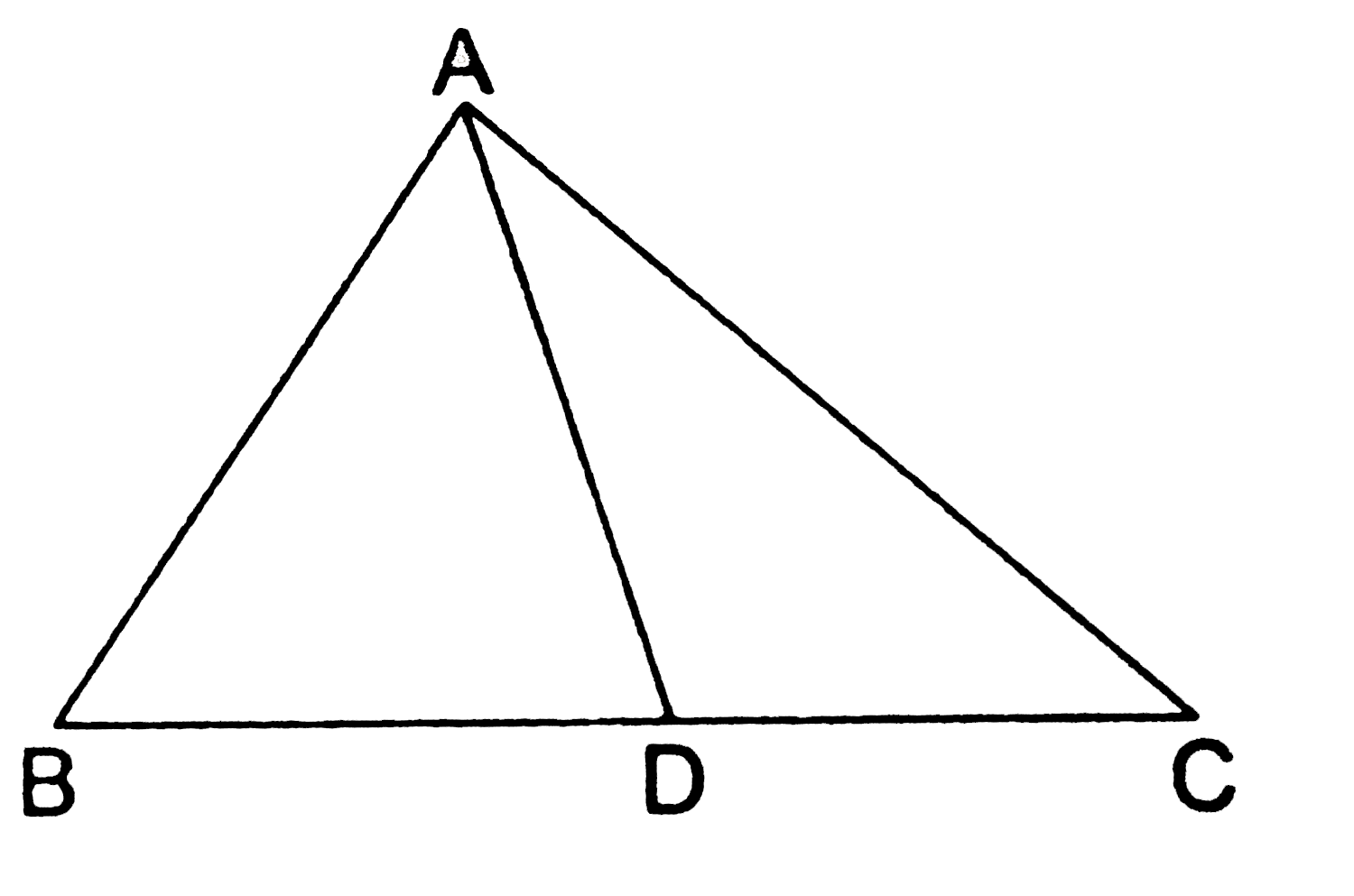In . D is a point on side BC such that AD bisects . Find the value of .
The correct Answer is:B
To solve the problem, we will follow these steps:
Step 1: Define the Angles
Let the angle C be x. According to the problem, angle B is twice angle C, so we can write:
B=2x
Step 2: Express Angle A
The sum of the angles in triangle ABC is 180∘. Therefore, we can express angle A as:
A=180∘−B−C=180∘−2x−x=180∘−3x
Step 3: Use the Angle Bisector Theorem
Point D is on side BC such that AD bisects angle BAC. This means:
∠BAD=∠CAD=A2=180∘−3x2
Step 4: Set Up the Relationship Between Angles
Since AD=CD, triangles ACD and ADC are isosceles. Therefore, the angles opposite to equal sides are equal:
∠ACD=∠CAD
Let ∠CAD=∠ACD=180∘−3x2.
Step 5: Calculate the Angles in Triangle ACD
In triangle ACD, the angles are:
- ∠CAD=180∘−3x2
- ∠ACD=180∘−3x2
- ∠ADC=180∘−∠CAD−∠ACD=180∘−2⋅180∘−3x2=3x
Step 6: Apply the Angle Sum Property
Now, we have the angles in triangle ACD:
∠A+∠C+∠D=180∘
Substituting the angles we found:
180∘−3x2+180∘−3x2+3x=180∘
This simplifies to:
180∘−3x+3x=180∘
This equation holds true, confirming our angle relationships.
Step 7: Solve for x
Now we can use the relationship established earlier:
5x=180∘
Thus,
x=180∘5=36∘
Step 8: Find Angle A
Now we can find angle A:
A=180∘−3x=180∘−3⋅36∘=180∘−108∘=72∘
Final Answer
The value of angle BAC is:
∠BAC=72∘
---
Let the angle C be x. According to the problem, angle B is twice angle C, so we can write:
B=2x
The sum of the angles in triangle ABC is 180∘. Therefore, we can express angle A as:
A=180∘−B−C=180∘−2x−x=180∘−3x
Point D is on side BC such that AD bisects angle BAC. This means:
∠BAD=∠CAD=A2=180∘−3x2
Since AD=CD, triangles ACD and ADC are isosceles. Therefore, the angles opposite to equal sides are equal:
∠ACD=∠CAD
Let ∠CAD=∠ACD=180∘−3x2.
In triangle ACD, the angles are:
- ∠CAD=180∘−3x2
- ∠ACD=180∘−3x2
- ∠ADC=180∘−∠CAD−∠ACD=180∘−2⋅180∘−3x2=3x
Now, we have the angles in triangle ACD:
∠A+∠C+∠D=180∘
Substituting the angles we found:
180∘−3x2+180∘−3x2+3x=180∘
This simplifies to:
180∘−3x+3x=180∘
This equation holds true, confirming our angle relationships.
Now we can use the relationship established earlier:
5x=180∘
Thus,
x=180∘5=36∘
Now we can find angle A:
A=180∘−3x=180∘−3⋅36∘=180∘−108∘=72∘
The value of angle BAC is:
∠BAC=72∘
Topper's Solved these Questions
Similar Questions
Knowledge Check
- Question 1 - Select One
In ΔABC,∠B=2∠C. D is a point on side BC such that AD bisects ∠BACandAD=CD. Find the value of ∠BAC.
A36∘B72∘C108∘D120∘ - Question 2 - Select One
D is a point on the side BC of a ΔABC such that AD bisects ∠BAC . Then
ABD=CDBBA>BDCBD>BADCD>CA - Question 3 - Select One
In a ΔABC, AB = AC and D is a point on AB, such that AD = DC = BC. Then, ∠BAC is
A40∘B45∘C30∘D36∘
In ΔABC,D is any point on side BC. Prove that
AB+BC+CA>2ADView SolutionIn ΔABC,AB=AC and D is a point in BC so that BD=CD. Prove that AD bisects ∠BAC.
View SolutionIn ΔABC, if D is any point on the side BC, show that (AB+BC+AC)>2AD.
 View Solution
View SolutionIn triangle ABC , angle B is equal to twice of angle C , D is a point on BC such that AD bisects ∠BAC and AB=AD . Prove that ∠BAC=72∘
View SolutionIf D is a Point on the side BC of a ΔABC such that AD bisects ∠BAC. Then
View Solution

